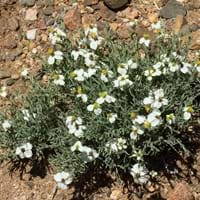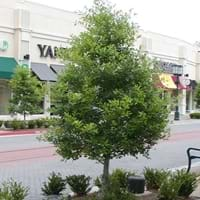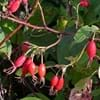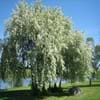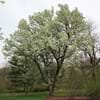Life Span
Annual and Perennial
Perennial
Type
Flowering Plants, Shrub
Broadleaf Evergreen
Origin
Mexico, Southwestern United States, Texas
Hybrid origin
Types
Not Available
Not Available
Habitat
Hot climate regions, Humid climates
By seashore, sandy seeps, Woodlands
USDA Hardiness Zone
5-9
6-9
AHS Heat Zone
Not Available
Not Available
Sunset Zone
Not Available
21,22
Habit
Clump-Forming
Pyramidal
Flower Color Modifier
Bicolor
Bicolor
Fruit Color
Not Available
Red
Leaf Color in Spring
Dark Green
Green
Leaf Color in Summer
Green, Light Green
Green
Leaf Color in Fall
Green, Light Green
Green
Leaf Color in Winter
Green, Dark Green
Green
Leaf Shape
Long linear and narrow
Elliptic and Ovate
Plant Season
All year
Spring, Summer, Fall, Winter
Sunlight
Full Sun
Full Sun, Partial Sun
Type of Soil
Moist
Clay, Loam, Sand
The pH of Soil
Neutral, Slightly Acidic, Slightly Alkaline
Acidic, Neutral
Soil Drainage
Well drained
Average
Bloom Time
Mid Summer, Summer
Early Spring, Spring, Late Spring
Tolerances
Drought
Pollution, Salt, Soil Compaction
Where to Plant?
Container, Ground, Pot
Ground
How to Plant?
Seedlings
Rooted stem cutting, Stem Cutting, stem tip cuttings
Plant Maintenance
Low
Medium
Watering Requirements
Get enough water whenever the soil is dry
Average Water Needs, Do not water frequently
In Summer
Lots of watering
Lots of watering
In Spring
Average Water
Moderate
In Winter
Ample Water
Average Water
Soil pH
Neutral, Slightly Acidic, Slightly Alkaline
Acidic, Neutral
Soil Type
Moist
Clay, Loam, Sand
Soil Drainage Capacity
Well drained
Average
Sun Exposure
Full Sun
Full Sun, Partial Sun
Pruning
Remove dead branches, Remove dead flowers
Remove dead leaves, Requires very little pruning
Fertilizers
Fertilizer every month during spring, General garden fertilizer
Any balanced general purpose fertilizer
Pests and Diseases
Blight, Botrytis Blight, Leaf spot, Powdery mildew, Root rot
Canker, Leaf spot, Red blotch, Tar spot
Plant Tolerance
Drought
Drought
Flowers
Yes
Insignificant
Flower Petal Number
Single
Single
Foliage Texture
Fine
Medium
Foliage Sheen
Matte
Glossy
Attracts
Butterflies
Bugs, Insects, Sawfly
Allergy
allergic reaction, poisonous if ingested, Skin irritation
Not Available
Aesthetic Uses
Borders, Showy Purposes, small hedge
Beautification
Beauty Benefits
No Beauty Benefits
Not Available
Environmental Uses
Food for insects, Provides ground cover
Air purification
Medicinal Uses
No Medicinal Use
Not Available
Part of Plant Used
Flowers, Leaves
Leaves
Other Uses
Economic Purpose, Used as Ornamental plant
Not Available
Used As Indoor Plant
No
No
Used As Outdoor Plant
Yes
Yes
Garden Design
Bedding Plant, Flower borders, Hedges, Not Available
Feature Plant, Foundation, Street Trees, Topiary, Bonsai, Espalier
Botanical Name
Zinnia acerosa
ILEX x attenuata 'Savannah'
Common Name
desert zinnia, wild zinnia, white zinnia and spinyleaf zinnia
Savannah Holly
In Hindi
White Zinnia
Savannah Holly
In German
Weiß Zinnia
Savannah Holly
In French
Blanc Zinnia
Savannah Holly
In Spanish
Zinnia blanco
Savannah Holly
In Greek
λευκό Zinnia
Savannah Holly
In Portuguese
branco Zinnia
Savannah Holly
In Polish
Biały Zinnia
Savannah Holly
In Latin
Zinnia album
Savannah Holly
Phylum
Magnoliophyta
Tracheophyta
Class
Magnoliopsida
Magnoliopsida
Order
Asterales
Aquifoliales
Family
Asteraceae
Aquifoliaceae
Clade
Angiosperms, Asterids, Eudicots
Angiosperms, Asterids, Eudicots
Tribe
Not Available
Not Available
Subfamily
Not Available
Not Available
Number of Species
Not Available
Not Available
Difference Between White Zinnia and Savannah Holly
If you are confused whether White Zinnia or Savannah Holly are same, here are some features about those plants to help you choose better. Many people think that these two plants have the same characteristics, but one can see White Zinnia and Savannah Holly Information and learn more about it. Fertilizers required for proper growth of White Zinnia are Fertilizer every month during spring and General garden fertilizer, whereas for Savannah Holly fertilizers required are Any balanced general purpose fertilizer. Hence, one should know the basic difference between White Zinnia and Savannah Holly if you are planning to have them in your garden to enhance its beauty.
<
Flowering PlantsImportance of White Zinnia and Savannah Holly
Want to have the most appropriate plant for your garden? You might want to know the importance of White Zinnia and Savannah Holly. Basically, these two plants vary in many aspects. Compare White Zinnia and Savannah Holly as they differ in many characteristics such as their life, care, benefits, facts, etc. Every gardener must at least have the slightest clue about the plants he wants to plant in his garden. Compare their benefits, which differ in many ways like facts and uses. The medicinal use of White Zinnia is No Medicinal Use whereas of Savannah Holly is Not Available. White Zinnia has beauty benefits as follows: No Beauty Benefits while Savannah Holly has beauty benefits as follows: No Beauty Benefits.
Compare Facts of White Zinnia vs Savannah Holly
How to choose the best garden plant for your garden depending upon its facts? Here garden plant comparison will help you to solve this query. Compare the facts of White Zinnia vs Savannah Holly and know which one to choose. As garden plants have benefits and other uses, allergy is also a major drawback of plants for some people. Allergic reactions of White Zinnia are allergic reaction, poisonous if ingested and Skin irritation whereas of Savannah Holly have Not Available respectively. Having a fruit bearing plant in your garden can be a plus point of your garden. White Zinnia has no showy fruits and Savannah Holly has showy fruits. Also White Zinnia is flowering and Savannah Holly is not flowering . You can compare White Zinnia and Savannah Holly facts and facts of other plants too.
